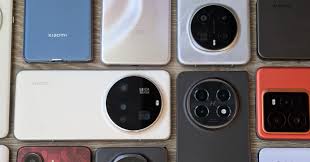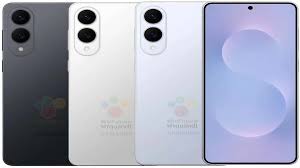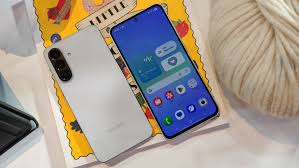The global smartphone market continues to produce remarkable devices, but not all of them make it to American shores. While US consumers enjoy access to flagship devices from Apple, Samsung, and Google (with these brands dominating 84% of the US market share as of 2025), many innovative smartphones remain exclusive to markets in Europe, Asia, and beyond. Whether restricted by licensing agreements, carrier partnerships, or market strategy decisions, these devices represent what American consumers are missing in the increasingly homogenized US smartphone landscape.
Oppo Find N5: The Ultimate Foldable Experience
The Oppo Find N5 stands as one of the most impressive foldable smartphones in 2025, yet remains unavailable to US consumers. Priced at approximately £1,106 in markets like Europe, this book-style foldable showcases extraordinary engineering with its ultra-thin profile—measuring just 3.6 mm when open—making it one of the thinnest foldables currently available.
The Find N5’s dual-display setup features a practical 6.62-inch cover display for everyday use and an expansive 8.12-inch inner screen that unfolds to provide a tablet-like experience. This combination offers tremendous versatility, allowing users to seamlessly transition between phone and tablet functionalities without compromise.
Under the hood, the Find N5 doesn’t disappoint with cutting-edge specifications. It runs on Qualcomm’s Snapdragon 8 Elite chipset paired with a generous 16GB of RAM, ensuring exceptional performance for even the most demanding applications and multitasking scenarios. Storage options are plentiful, and the device is powered by a substantial 5,600 mAh battery that supports 80W wired fast charging and wireless charging capabilities.
The triple-camera system represents a minor compromise in the otherwise stellar package, featuring a 50-megapixel main sensor, 50-megapixel telephoto lens, and an 8-megapixel ultrawide camera. While competent, this camera setup doesn’t quite match the photography capabilities of non-folding flagships, a common limitation in the foldable form factor.
Software remains the primary pain point, with some users reporting bugs and excessive bloatware. Additionally, the practicalities of importing this device—including potential warranty issues and compatibility challenges with US carriers—present significant hurdles for American consumers interested in this exceptional foldable.
Key Specifications:
6.62-inch cover display and 8.12-inch inner screen
Snapdragon 8 Elite processor with 16GB RAM
5,600 mAh battery with 80W fast charging
Triple camera system (50MP main, 50MP telephoto, 8MP ultrawide)
Ultra-thin 3.6mm profile when open
Xiaomi Poco F7 Ultra: Flagship Features at Mid-Range Pricing
Xiaomi’s sub-brand Poco has evolved from its budget-focused roots to offer devices with increasingly premium features, and the Poco F7 Ultra exemplifies this progression. Available in European markets for approximately £649, the F7 Ultra delivers near-flagship specifications at a significantly lower price point than comparable US-available alternatives.
The F7 Ultra impresses with its Snapdragon 8 Elite chipset—the same processor powering much more expensive flagship phones—complemented by Xiaomi’s VisionBoost D7 technology for enhanced graphics performance. This processing prowess makes the device exceptionally capable for gaming, multimedia consumption, and day-to-day multitasking.
The display represents another highlight, featuring a stunning 6.7-inch panel with a 120Hz refresh rate that delivers smooth scrolling and responsive touch interactions. This high-quality screen, combined with the powerful processor, creates an immersive and fluid user experience rarely found at this price point.
Durability hasn’t been overlooked, with the F7 Ultra boasting an IP68 rating for water and dust resistance—a feature often reserved for premium devices. The robust triple-camera system delivers versatile photography options, though image processing doesn’t quite match the computational photography capabilities of Google’s Pixel devices or Apple’s iPhones.
Battery life excels with fast charging and up to 50-watt wireless charging support, though Xiaomi’s HyperOS 2 software remains a mixed experience with excessive bloatware. However, the company’s improved commitment to software longevity (four Android version updates and six years of security patches) makes the F7 Ultra a more viable long-term investment than previous Poco devices.
Key Specifications:
6.7-inch display with 120Hz refresh rate
Snapdragon 8 Elite chipset with VisionBoost D7
IP68 water and dust resistance
Triple-camera system
50W wireless charging capability
Four years of Android updates promised
Nubia Z70 Ultra: Premium Performance with Photography Focus
The Nubia Z70 Ultra represents fantastic value at its £749 price point, offering several premium specifications that would command significantly higher prices from mainstream brands in the US market. Building upon last year’s Z60 Ultra model, the Z70 Ultra refines the formula with updated hardware and performance optimizations.
The standout feature is undoubtedly the device’s expansive 6.8-inch display, which provides an immersive canvas for content consumption, gaming, and productivity. This large, high-quality panel delivers excellent color reproduction, brightness levels, and responsiveness, making it ideal for multimedia enthusiasts.
Performance excels thanks to the inclusion of Qualcomm’s Snapdragon 8 Elite chipset, which handles everything from intensive gaming to complex multitasking without hesitation. This processing power, combined with the large display, positions the Z70 Ultra as an excellent device for power users and mobile gamers seeking desktop-like performance in a smartphone form factor.
Battery life impresses with a massive 6,150 mAh capacity—substantially larger than most flagship devices available in the US—ensuring comfortable all-day usage even with demanding applications. The adaptable triple-camera system offers versatility for various photography scenarios, though image processing and video recording performance remain inconsistent compared to industry leaders.
Software represents the most significant weakness, with Nubia offering just three Android version updates—falling short of the longer support periods now provided by Samsung, Google, and Apple. This limited software longevity could be problematic for users who prefer to keep their devices for several years.
Key Specifications:
6.8-inch premium display
Snapdragon 8 Elite chipset
Massive 6,150 mAh battery
Versatile triple-camera system
Three Android version updates promised
OnePlus Nord 4: Premium Build at Mid-Range Price
The OnePlus Nord 4, priced at £369 in European markets, demonstrates OnePlus’s continued commitment to offering “premium feel” devices at accessible price points. One of the Nord 4’s most distinguishing features is its metal unibody construction—a rarity in the mid-range segment where plastic builds typically dominate.
This premium build quality extends to the excellent display, which delivers visual performance typically associated with more expensive devices. While not reaching the technical specifications of flagship screens, the Nord 4’s display offers excellent color accuracy, brightness, and fluidity for everyday use.
Performance strikes an ideal balance for the average user, providing sufficient processing power for typical smartphone activities without unnecessary excess. This focused approach contributes to the Nord 4’s impressive battery life, which easily lasts through a full day of usage. The rapid charging capabilities further enhance the user experience by minimizing downtime when power runs low.
Photography capabilities are adequate for casual use, with the main camera delivering respectable results in good lighting conditions. However, the ultrawide camera represents a notable weakness, producing images that fall short of the main sensor’s quality. This camera system inconsistency is a common compromise in mid-range devices.
A standout feature is the AquaTouch technology, which allows the screen to function normally with wet hands or in rainy conditions—a practical enhancement that addresses a common frustration with touchscreen devices. The absence of wireless charging and the presence of bloatware represent the primary compromises in this otherwise well-rounded mid-range option.
Key Specifications:
Premium metal unibody design
Excellent display quality
Solid battery life with rapid charging
AquaTouch wet-hands functionality
Inconsistent camera performance
No wireless charging
Xiaomi 14T: Balanced Performance with Value Focus
The Xiaomi 14T represents a compelling mid-tier offering that has seen price reductions since its initial release, making it an increasingly attractive value proposition for consumers in markets where it’s available. As a mid-year successor in Xiaomi’s lineup, the 14T balances performance, features, and affordability in a well-rounded package.
The device’s large display serves as a centerpiece of the user experience, offering generous screen real estate for content consumption and everyday tasks. While not featuring the cutting-edge display technologies found in premium flagships, the 14T’s screen delivers satisfying visual performance for its price category.
Performance remains solid across everyday usage scenarios, with sufficient processing power to handle common applications, social media, and light gaming without frustration. This balanced approach to performance contributes to the phone’s ample battery life, which comfortably lasts through intensive use days.
The camera system delivers reliable results in most lighting conditions, though it doesn’t push the boundaries of smartphone photography. Images from the 14T are generally detailed and well-exposed in good lighting, with reasonable performance in challenging environments—an appropriate level of photographic capability for the price point.
Software remains a consistent pain point across Xiaomi devices, with MIUI/HyperOS suffering from bloatware and occasional quirks that detract from the otherwise polished hardware experience. The absence of wireless charging—a feature increasingly expected even in mid-range devices—represents another compromise in the overall package.
Key Specifications:
Large, quality display
Balanced performance for everyday tasks
Solid battery life
Reliable camera system
No wireless charging
Software bloatware issues
Why These Phones Aren’t Available in the US Market
The absence of these compelling smartphones from the American market stems from multiple factors. Regulatory hurdles present significant barriers, with the US implementing stringent certification processes and intellectual property protections that can be challenging and expensive for international manufacturers to navigate. Additionally, the US smartphone market is dominated by carrier-driven sales, with approximately 58% of the market belonging to Apple and 23% to Samsung.
This carrier-centric ecosystem often requires manufacturers to develop specialized versions of their devices to support US-specific network bands and technologies, representing additional development costs that smaller brands may struggle to justify. Furthermore, companies like Xiaomi and Oppo face ongoing geopolitical tensions between the US and China, creating uncertainty about long-term viability in the American market.
For consumers, these absences represent missed opportunities to experience innovative hardware and software approaches that differ from the increasingly homogenized offerings of the dominant manufacturers. While Apple maintains 58% of the US market and Android holds 42% (with Samsung being the dominant Android brand), the diversity of devices and approaches available globally far exceeds what American consumers typically encounter.
Conclusion: Are These Phones Worth Importing?
The smartphones highlighted in this review showcase impressive specifications, innovative features, and compelling value propositions unavailable to US consumers through official channels. However, prospective importers should carefully consider several significant drawbacks before purchasing.
Network compatibility remains the primary concern, as international variants may lack support for specific US carrier bands, potentially resulting in suboptimal connectivity or complete incompatibility. Warranty support presents another major limitation, with international purchases typically offering limited or no warranty coverage in the US, leaving consumers without recourse for hardware failures.
Software represents a third critical consideration, with imported devices often lacking US-specific features and potentially including region-locked applications or bloatware difficult to remove. Additionally, security updates and software support may be inconsistent or delayed compared to officially supported devices.
For tech enthusiasts willing to navigate these challenges, phones like the Oppo Find N5 and Xiaomi Poco F7 Ultra represent unique opportunities to experience cutting-edge hardware unavailable in the US market. However, for average consumers prioritizing reliability and support, the complications of importing likely outweigh the benefits these devices offer.
The global smartphone market’s diversity continues to exceed what’s available to American consumers, highlighting the impact of market dynamics and regulatory environments on consumer choice. While US consumers enjoy excellent options from established manufacturers, these international exclusives demonstrate that significant innovation occurs beyond America’s smartphone ecosystem.




